Our work in this area aims to understand the functioning of materials that are key to IBM core technologies as well as for explorative technologies. We are working to design novel compounds with improved and/or higher functionalities and to provide support and guidance for experiments.
Our group has developed end-to-end simulation frameworks based on novel scalable HPC algorithms, attaining a strong track record in the development of classical reactive force fields, quantum chemistry methods, ab initio molecular dynamics, combined quantum mechanics/molecular mechanics (QM/MM) and classical molecular dynamics (atomistic and coarse-grained).
Lithium / air batteries
In the past few years, lithium/air batteries have emerged as the ideal solution to the problem of energy storage, being able to deliver energy densities one order of magnitude larger than those of state-of-the-art electrochemical batteries. Using computer simulations, we identified the lithium peroxide as the main degrading agent for propylene carbonate (PC) solvent-based batteries.
Ab-initio molecular dynamics simulations have suggested that Li2O2 irreversibly decomposes the carbonate solvent, leading to alkyl carbonates. We also showed that, compared with a single Li2O2 unit in PC, a crystalline surface of Li2O2 exhibits an enhanced reactivity. In cooperation with external industrial partners, we are currently investigating the nucleation process of Li2O2 and its electronic properties.
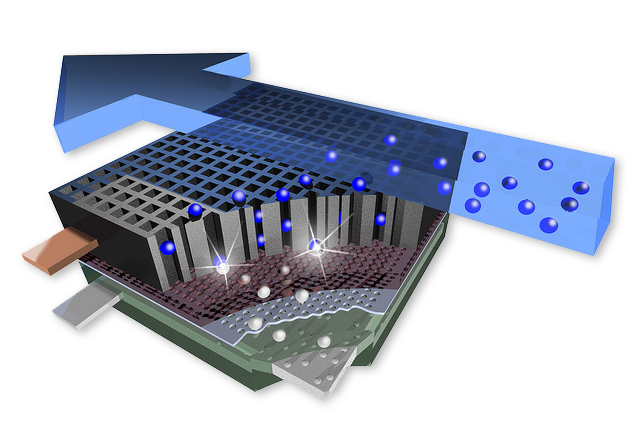
Lithium / sulfur batteries
In the current efforts to develop and produce valuable alternatives to lithium-ion batteries, lithium/sulfur batteries have emerged as an ideal solution for short-term applications. In fact, sulfur is a promising cathode material with a theoretical specific capacity that is five times larger than those of traditional cathode materials based on transition metals oxide or phosphates.
By using molecular dynamics simulations in collaboration with external industrial partners, we have characterized the chemical degradation of sulfur compounds to understand the fundamental processes behind the poor performance of first design lithium/sulfur electrochemical cells. This will allow the development of new materials, thus accelerating the delivery of such technology to the end-user market.
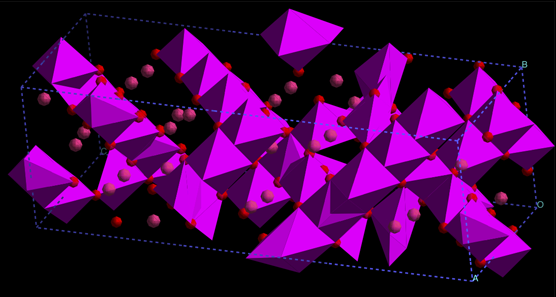
Industrial applications
Our collaborations with industrial partners often bring our interests to more applied physical/chemical processes. Our competencies have been used recently for shedding light on the chemical processes behind high-temperature degradation of organic compounds, as well as for understanding at the molecular level the physical process of nucleation for water and mixtures of water and organic compounds.
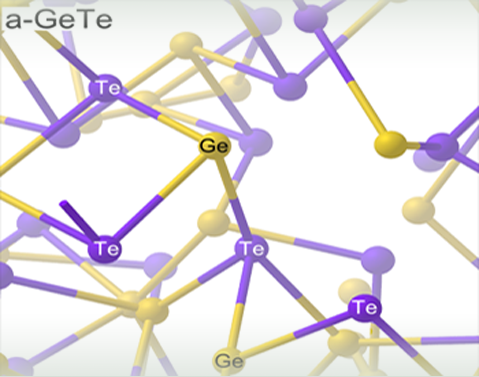
Phase-change memories
Phase-change materials (PCM) based on chalcogenide alloys are considered very promising for memory storage applications. The main problem today is represented by data corruption, caused by a change in resistivity of the amorphous phase over time.
By using combined classical and first-principles molecular-dynamics simulations, we characterized the cause of the drift of the resistivity in the amorphous phase of GeTe (a prototypical chalcogenide) providing ways to design solutions to reduce and control material degradation.
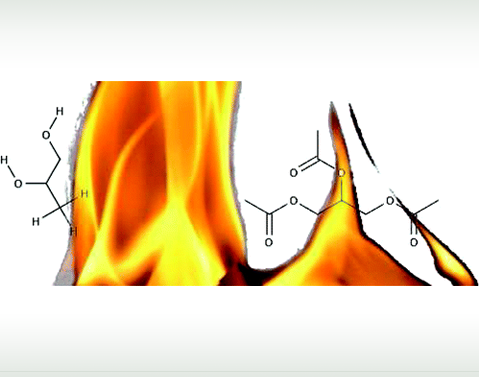
Thermal degradation processes
Glycerol, propylene glycol and triacetin are chemical compounds commonly used as food additives. Though pure chemicals are not considered harmful when used as dietary supplements, little is known about the nature of their thermal degradation products and the impact they may have on human health.
Together with our partners, we have investigated their thermal decomposition mechanisms of such molecules in the gas phase by a novel simulation framework. A qualitative experimental investigation using gas-phase chromatography-mass spectroscopy has allowed us to validate theoretical results with excellent agreement.
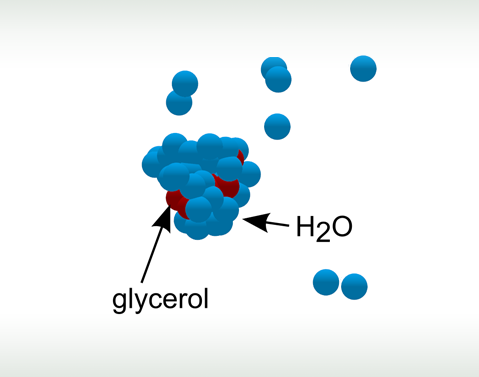
Aerosol nucleation
We have designed and developed a new coarse-grained model for water and glycerol to study aerosol processes. By using molecular dynamics simulations, we plan to characterize the nucleation, evaporation, condensation and coagulation of the glycerol-water mixtures to study how the relevant properties are affected by the simultaneous presence of glycerol and water compared to the properties of the individual compounds.
With this know-how, one may target the control of critical droplet sizes for specific consumer-goods applications.
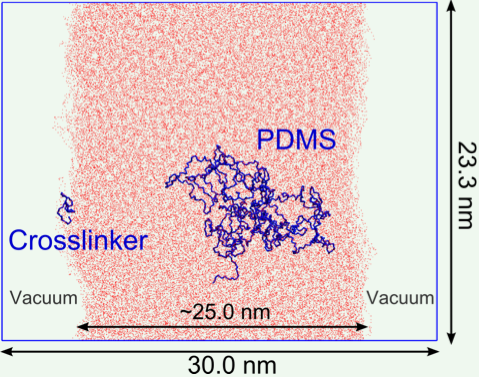
Polymer physics
Amorphous siloxane polymers are designed to have a high dielectric strength for use as high-voltage insulation materials. Their surface hydrophobicity is essential and can be impaired by several factors, leading to leakage currents due to dielectric breakdown. Self-recovery is possible and generally observed over a period of several hours.
By using large-scale, all-atom molecular dynamics simulations, we have rationalized the molecular mechanism behind the self-healing hydrophobic recovery of high-voltage insulators. With this understanding, future molecular components with desirable diffusion properties have been suggested for improving the self-recovery process.


